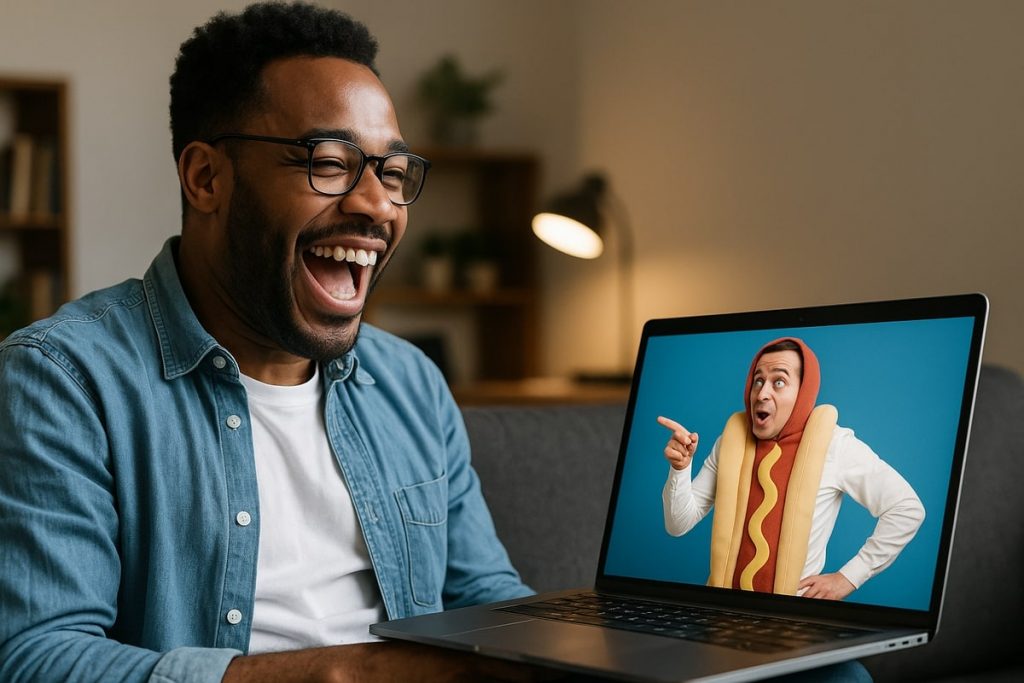“A lot of the future of search is going to be about pictures instead of keywords.”
This is what Pinterest CEO Ben Silberman said in an interview regarding his platform’s new Lens feature.
What he’s talking about is visual search.
And it’s quickly becoming the go-to way that people find what they’re looking for online.
In fact, 27% of searches across the 10 major search properties were for images.
More and more platforms are integrating features of a visual search engine.
Among these, there’s:
-
- Google Lens
-
- Bing Visual Search
-
- Pinterest Lens
- Snapchat “Eagle”
For retailers and other businesses that rely heavily on visuals to sell their products, the rise of visual search engines has huge consequences.
Learning how to leverage visual search in e-commerce and beyond can offer a major boost to your brand.
A failure to understand what is visual search or how to use it, however, can be a major disadvantage.
Consider the fact that three-quarters of U.S. internet users regularly or always do a search for visual content prior to making a purchase.
As more companies embrace this type of browsing, it’s time to learn more about what visual search is.
We’re going to explain just how a visual search engine works.
We’ll then take a look at examples of this type of platform in action.
Finally, we’ll explore how to optimize an image-based search strategy of your own.
What is Visual Search?
For most of the platforms with image-based searching right now, users search for an image using a picture.
What that means is, you can take a photo of an object and then use it as your search query on a visual search engine.
Usually, this happens via a visual search app on a mobile device using the camera.
However, Google recently announced it will test an update to its desktop image search engine.
And Pinterest offers their visual platform option on Firefox.
For large visual search engines like Google and Bing, a users’ search using a photo takes them to results across the web.
On platforms like Pinterest, though, search results are culled only from what’s already on the app.
For example, let’s say someone takes a picture of a friend’s living room they love using the Pinterest Lens.
The visual search app then provides suggestions for related Pins based on what image-based keywords the tool picks up.
So, this may include boards for living room decor and Sponsored Pins for throw blankets.
For brands, integrating their products into these platforms can encourage greater engagement and conversions.
You can also consider launching your own visual search app, like ASOS.
Letting customers snap a photo to find your products is an excellent way to enhance both engagement and conversions.
If it’s your own visual search app, it’s also a great strategy for cross-selling and upselling.
Top Visual Search Engines & Apps
Google Lens
The Google visual search tool was first rolled out at their I/O developer conference in 2017.
It was one of the biggest releases of an AI tool, and continues to integrate cutting-edge technology, like AR.
With the latest update to the platform in May 2018, Google continues to transform what a smartphone camera can do.
Now, Google visual search is directly built into at least 10 Android models and the latest Google Pixel phones.
It also continues to run across Google Photos and their Assistant voice platform.
With other integrations – like Google Map directions appearing directly on-screen – the value of this type of search on Google continues to increase.
One of these recent integrations with Google Shopping, Style Match, provides insight into the future of visual search for e-commerce.
Google Shopping commands over 76% of U.S. retail search ad spend.
With a major platform like this turning its attention to image-based search, brands should take note and make sure they’re appearing in the results pages.
Pinterest Lens
Since it first debuted in February, 2017, Pinterest Lens has grew to become one of the most popular image-based search platforms.
On average, people use it at least three times per day.
And, the Pinterest visual search tool boasts over 600 million searches per month.
To use it, all you need to do is open the camera in the Pinterest app.
With the Lens activated, you can snap a picture and Pinterest will provide other pins and boards from its platform that relate to it.
Though not all Pins are shoppable, the Pinterest visual search tool is still a revenue-driving feature.
In fact, 90% of weekly Pinterest users cite the platform as helping them make a purchase decision.
Like Google, the site continues to offer new updates and features that make the Lens more valuable, efficient, and user-friendly.
In terms of it being a visual search tool for e-commerce, the site offers Pinterest marketers the ability to have their ads appear within Lens search results.
Instead of being solely text keyword-based, Sponsored Pins can appear with Lens searches, too.
Snapchat Visual Search
The latest visual search app to appear on the scene is fresh out of Snapchat, HQ.
In fact, it’s so new that it hasn’t even been rolled out fully yet.
Termed “Eagle”, Snapchat’s image search tool lets users point their camera lens at a physical object.
Then, an Amazon card will appear on screen to take users to either the e-commerce app or website.
Essentially, it lets you point and shoot and buy on Amazon.
This is clearly both a Snapchat and Amazon visual search tool, even though the e-commerce giant doesn’t officially have one to call it’s own (yet).
However, this partnership – though it had its speed bumps – can be a major boost to Snapchat.
With a recognizable name like Amazon by their side, Snapchat’s e-commerce endeavors can become more desirable and legitimate.
How to Optimize for Visual Search
Like text-based searching, visual search engines employ an algorithm for how to rank results.
In order for your brand to appear in the search pages of an image-based query, there are certain factors to consider.
Luckily, these tactics are often easy adjustments to make to or include in your existing SEO strategy.
SEO for Visual Search
The practice of optimizing for image-based browsing actually follows a lot of fundamental SEO standards.
First, structured data is still incredibly important.
Images should be displayed clearly and in a format that can be easily crawled by visual search engines.
Other tips to keep in mind to optimize your images:
-
- Optimize alt-tags
-
- Submit images to image sitemap
-
- Format to be ideal image size and file type for the platform
- Make both mobile- and desktop-friendly
For visual search apps, like Pinterest, there are more specific optimization techniques.
Because this search engine is native to their platform, there are Pinterest-specific optimization techniques.
For example, one technique is to check your own visibility on the Pinterest visual search tool.
Using Pinterest Lens, check out the keywords that appear when you snap your own product.
Seeing what appears can help you optimize for certain keywords and enhance your presence on the platform.
Build a Visual Search Function into Your Online Inventory
Making your website searchable for users that just want to snap a picture from their phone doesn’t sound so simple.
However, you’ll be pleasantly surprised.
There are open-source APIs for image recognition, like IBM Watson, Slyce, and Amazon Rekognition.
There are also platforms that can handle image integration for you – for a small fee.
Sites like Cortexica can handle these projects to make sure you’re able to take full advantage of visual search for e-commerce.
Only 8% of retailers offer image recognition and search capability in their online inventory.
However, brands are increasingly adding this feature to become more competitive.
Target, for example, integrated their inventory with the Pinterest visual search tool.
And other brands are offering standalone image-based search to their sites.
ASOS, Zara, and H&M are all among brands leveraging visual search for e-commerce by integrating the feature into their websites.
With results like 51% more site dwell time and 48% more product views, e-commerce sites reachable by camera clearly have a much greater advantage over all others.
Start Appearing in Image-Based Searches
Brands that embrace visual search engines or apps by 2021 are expected to see a 30% increase in digital revenue.
Already, it’s clear that customers prefer to shop with the help of images.
Get ahead of your competitors by joining the image-based search bandwagon now. With or without a Pinterest marketing agency, now is the time to take steps to get ahead.
Whether you optimize your site for “snap and surf” or create your own visual search app, it’s time to integrate this feature into your marketing strategy.








